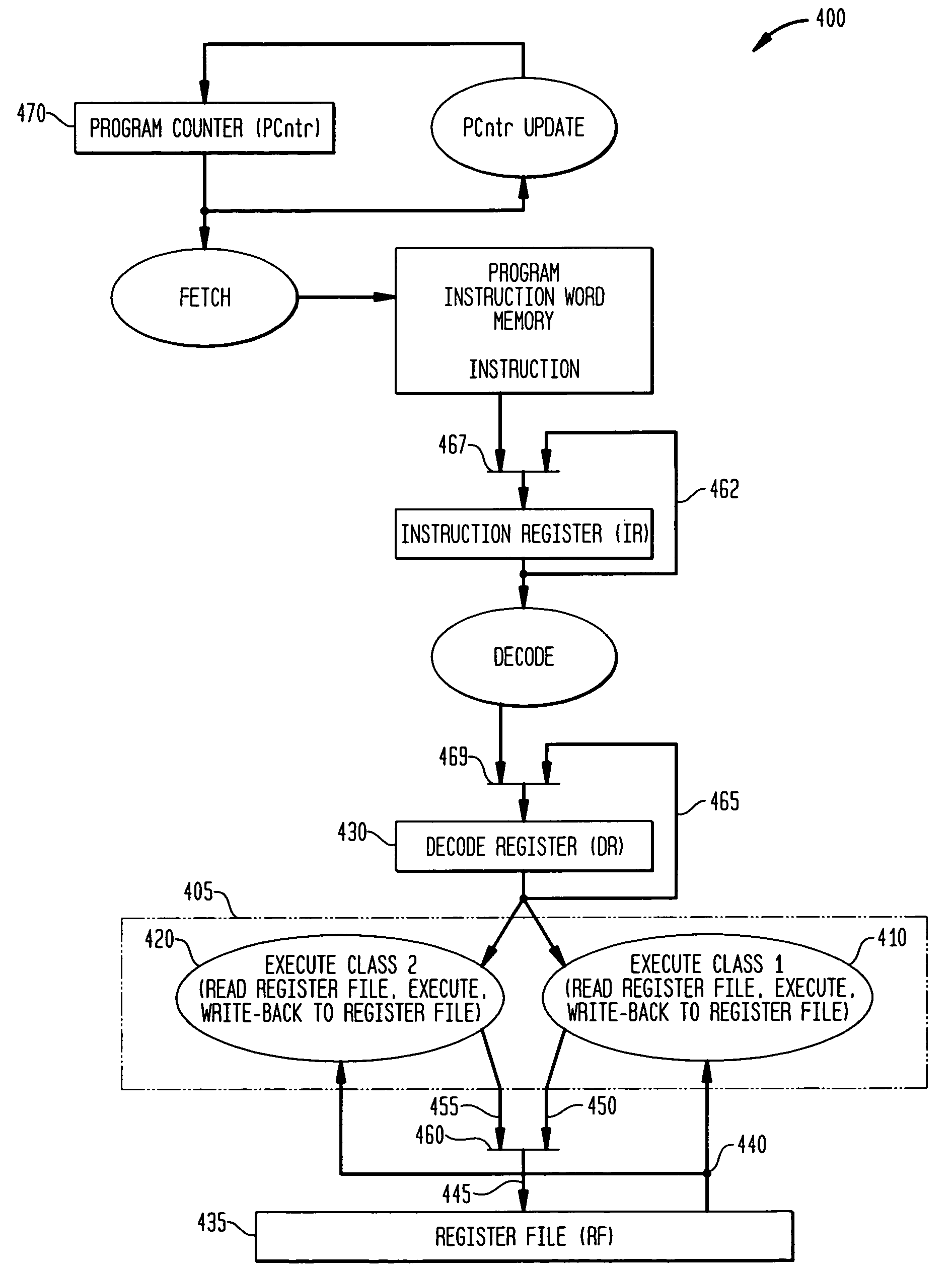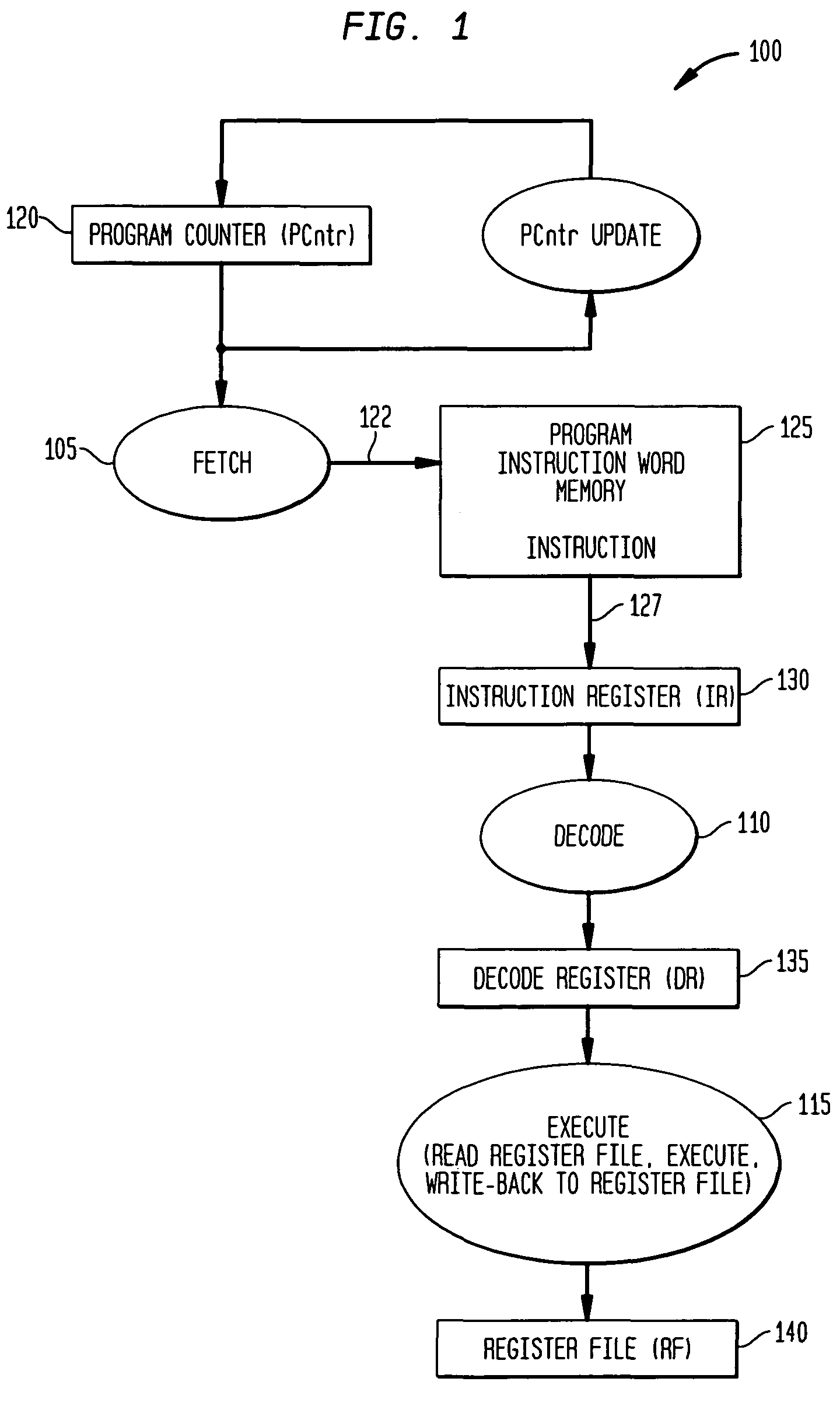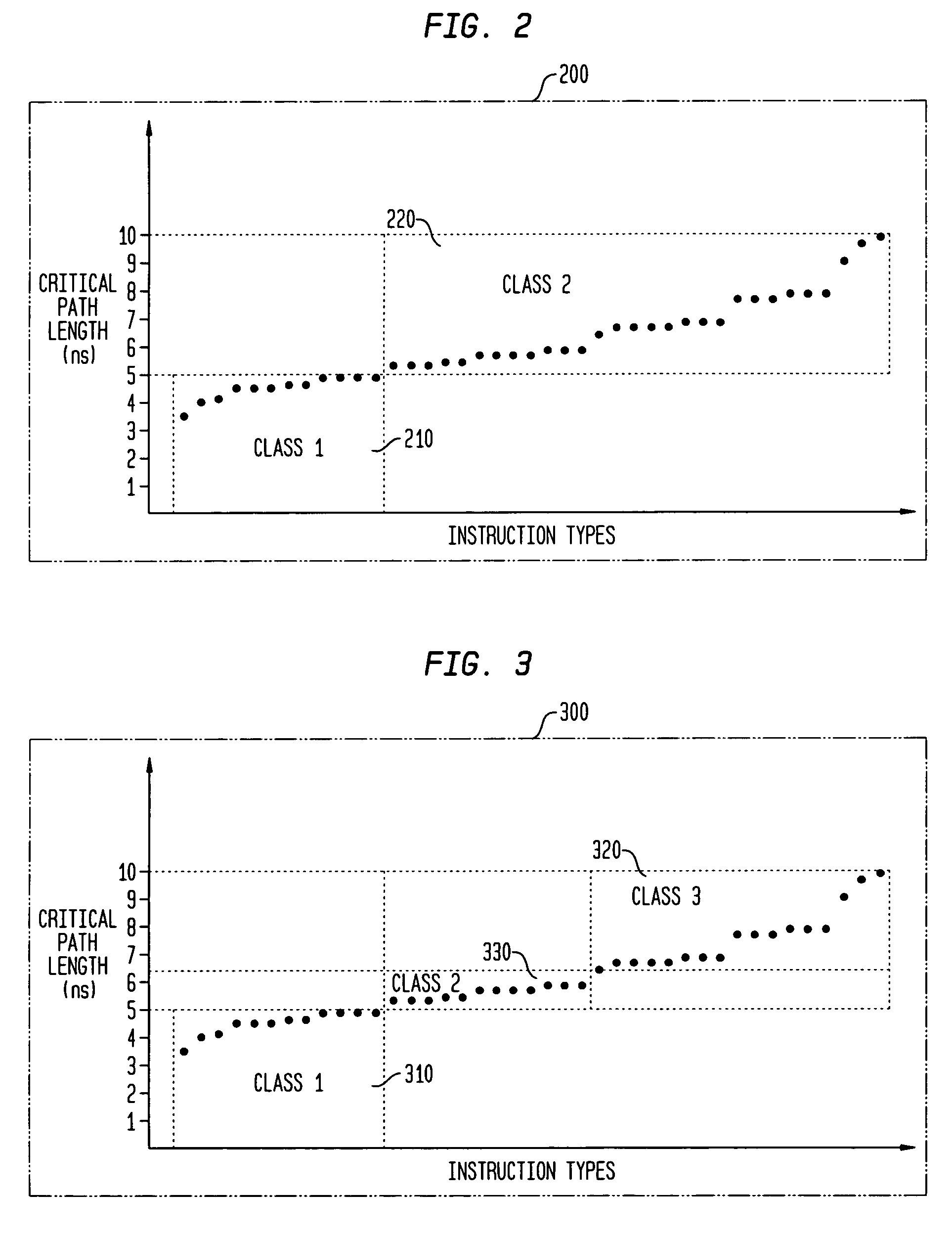Methods and apparatus for adapting pipeline stage latency based on instruction type
a technology of instruction type and pipeline stage, applied in the direction of instruments, program control, computation using denominational number representation, etc., can solve the problems of changing the programming model, increasing the complexity of hardware, and adding stages to an existing pipeline, so as to improve the execution latency, improve the throughput of the program, and improve the effect of execution latency
- Summary
- Abstract
- Description
- Claims
- Application Information
AI Technical Summary
Benefits of technology
Problems solved by technology
Method used
Image
Examples
Embodiment Construction
[0029]Various general observations concerning processors and application programs may be made as follows:[0030](1) Instructions in a programmable processor may vary in logical complexity and their implementations within the same processor may vary from one another in relative performance when synthesized for a given process technology and target clock frequency. Instruction timing performance is measured by each instruction's critical path, a measure of the worst-case signal propagation time for the instruction in each pipeline stage.[0031](2) For a processor with instructions of varying complexity, the instructions can be classified into “speed classes”, that is, separated into groups of instructions whose critical paths lie in the same range.[0032](3) High performance parallel processors which use super-scalar and / or VLIW techniques, particularly those used for digital signal processing, often support complex instruction types for specialized functions including packed data operat...
PUM
 Login to View More
Login to View More Abstract
Description
Claims
Application Information
 Login to View More
Login to View More - R&D
- Intellectual Property
- Life Sciences
- Materials
- Tech Scout
- Unparalleled Data Quality
- Higher Quality Content
- 60% Fewer Hallucinations
Browse by: Latest US Patents, China's latest patents, Technical Efficacy Thesaurus, Application Domain, Technology Topic, Popular Technical Reports.
© 2025 PatSnap. All rights reserved.Legal|Privacy policy|Modern Slavery Act Transparency Statement|Sitemap|About US| Contact US: help@patsnap.com



